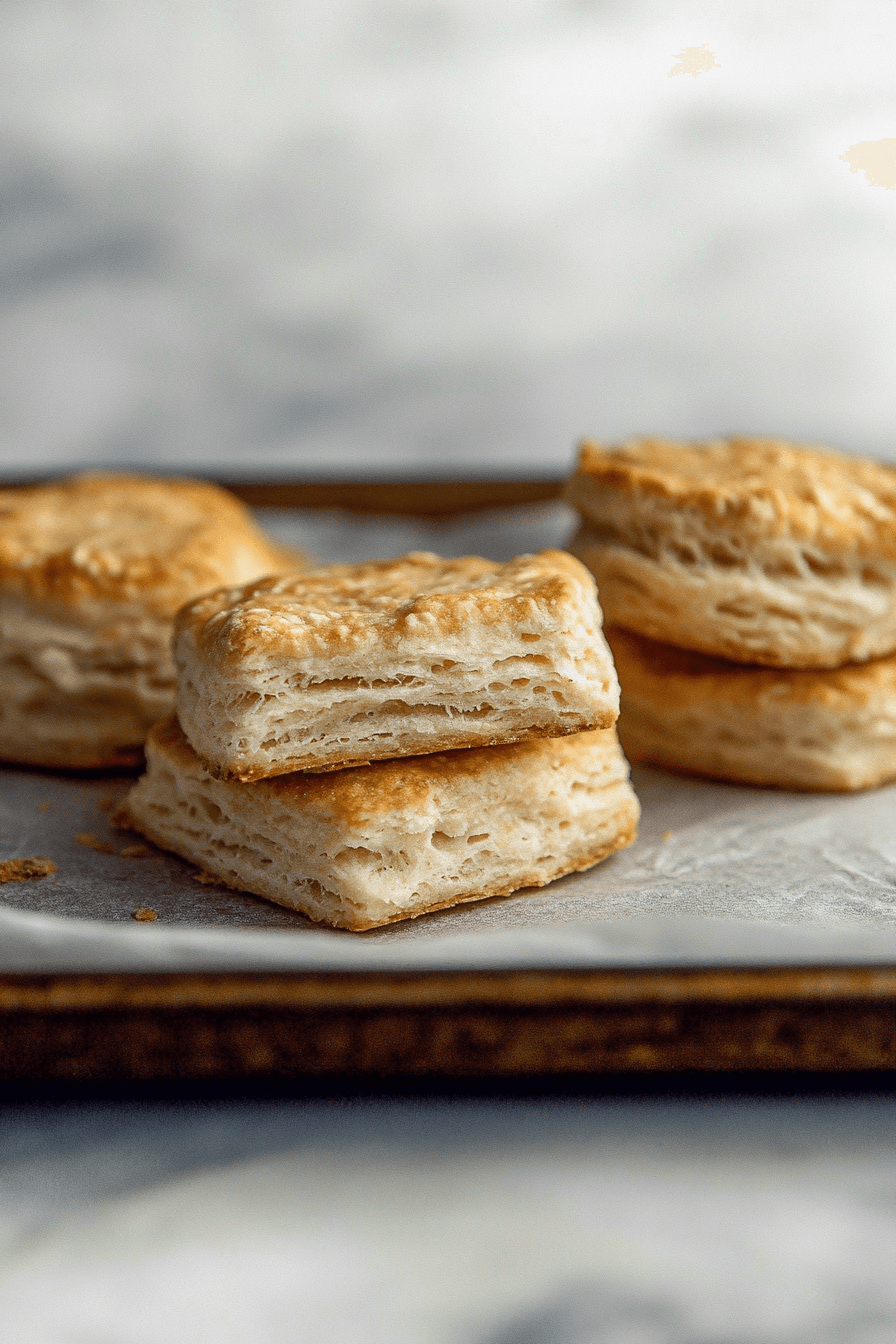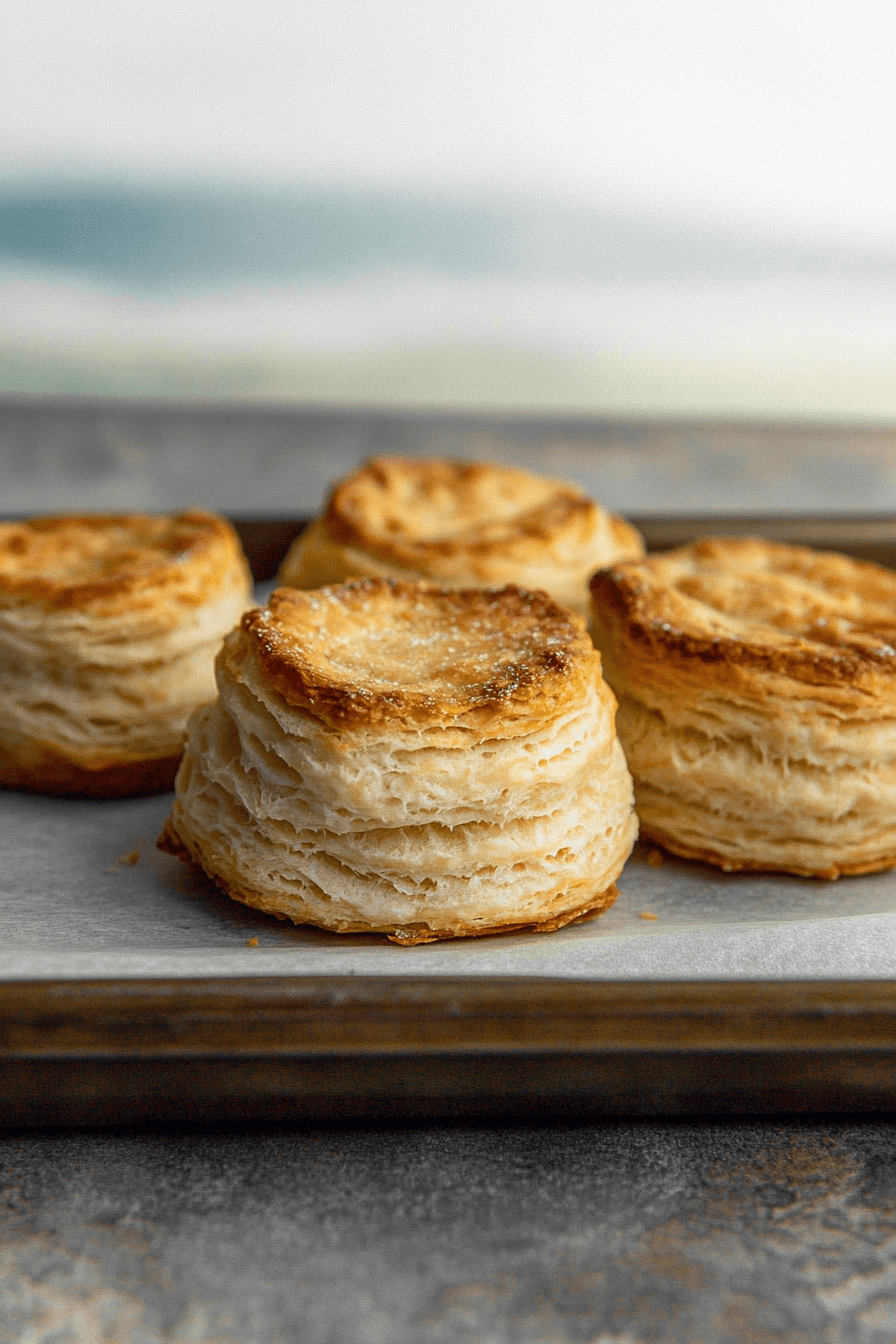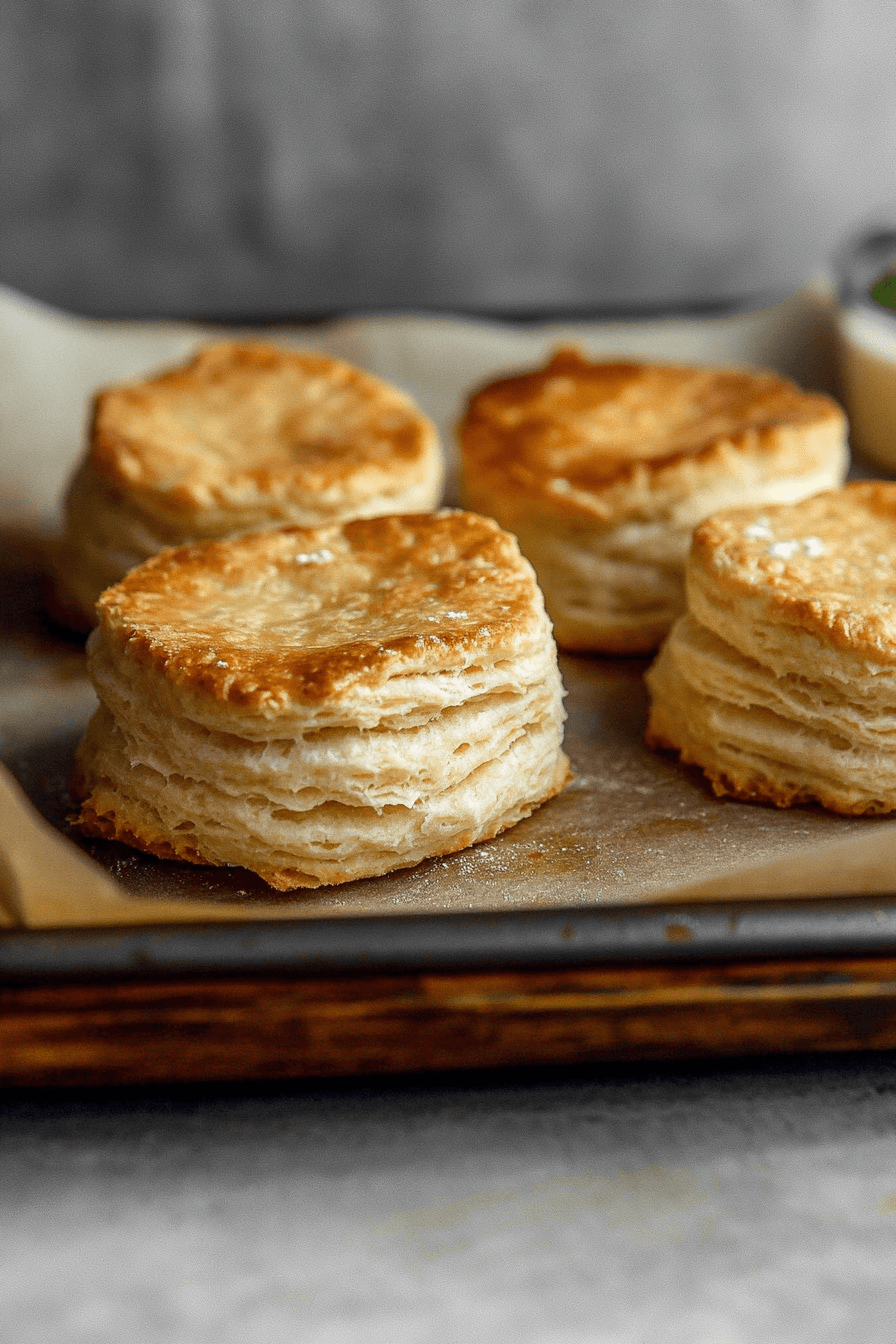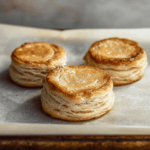Introduction to Rolled Buttermilk Biscuits
Welcome to the delightful world of rolled buttermilk biscuits, a simple yet delicious recipe that promises comfort and satisfaction. These biscuits are not only easy to make, but they bring joy and warmth to any table. Ideal for busy parents, home cooks, and food enthusiasts, this recipe highlights the importance of using cold ingredients to achieve those tender, flaky layers. From breakfast to dinner, rolled buttermilk biscuits suit any occasion, sparking creativity and culinary curiosity. For an exciting journey into the heart of this classic dish, read on for tips, variations, and secret ingredients.
Benefits and Advantages of Rolled Buttermilk Biscuits
What makes rolled buttermilk biscuits a favorite for many? Firstly, their simplicity is unmatched, providing a fuss-free baking experience even for beginners. The versatility of these biscuits allows them to pair perfectly with either savory dishes, like creamy potato soup, or sweet accompaniments. For those concerned about health, rolled buttermilk biscuits can be tailored to various dietary needs without compromising taste or texture. Additionally, the joy of crafting each biscuit by hand brings a rewarding sense of accomplishment, making them a pleasure to serve to family and friends. To understand the rich history of biscuits and their evolution over time, visit this comprehensive guide from King Arthur Baking. Each bite of these deliciously flaky biscuits ensures a moment of shared connection and warmth.

Ingredients Overview
Essential Ingredients for Rolled Buttermilk Biscuits
For crafting the best rolled buttermilk biscuits, you’ll need a few simple yet crucial ingredients. The foundation of these tender and flaky delights includes:
- All-Purpose Flour: 2 cups, provides structure.
- Baking Powder: 1 tablespoon, ensures rise and fluffiness.
- Baking Soda: ½ teaspoon, works with buttermilk for extra lift.
- Salt: 1 teaspoon, enhances flavor.
- Cold Unsalted Butter: ½ cup, cut into cubes; for flaky layers.
- Cold Buttermilk: ¾ cup, brings tanginess and moisture.
By keeping the butter and buttermilk cold, you ensure pockets of steam form during baking, resulting in that quintessential flakiness. For a vegan version, substitute the butter and buttermilk with plant-based alternatives.
Dietary Substitutions to Customize Your Rolled Buttermilk Biscuits
Catering to diverse dietary preferences is easy with a few substitutions:
- Gluten-Free: Substitute all-purpose flour with a gluten-free blend that includes xanthan gum for best results.
- Vegan: Use coconut oil or vegan butter in place of butter, and almond milk combined with a tablespoon of lemon juice for buttermilk.
- Low-Calorie: Opt for a low-fat buttermilk option and use less butter.
Adapting recipes to personal preferences or available ingredients can render each creation as unique as the moment it is prepared. For more savory ideas, consider experimenting with herbs such as rosemary or thyme.
How to Prepare the Perfect Rolled Buttermilk Biscuits: Step-by-Step Guide
Crafting rolled buttermilk biscuits is straightforward when following these step-by-step instructions:
First Step: Prepare the Oven and Dry Mix
Begin by preheating your oven to 425°F. In a large bowl, whisk together the dry ingredients: all-purpose flour, baking powder, baking soda, and salt. This uniform mix ensures that the biscuits rise evenly.
Second Step: Incorporate Cold Butter
Next, cut the butter into small cubes or, for improved distribution, grate the frozen butter. Add to the flour mixture, using your fingers or a pastry cutter to work it in until the mixture forms pea-sized crumbs. The cold butter is key to achieving tender biscuits.
Third Step: Combine the Mix with Buttermilk
Create a well in the center of the dry mix, then pour in the cold buttermilk. Stir gently until a shaggy dough forms. Caution is advised to avoid overmixing, which can toughen the biscuits.
Fourth Step: Shape the Dough
Turn the dough out onto a lightly floured surface. Knead gently a few times until it holds together. Roll or pat to a ½-3/4 inch thickness. Cold handling at this stage prevents the butter from melting too quickly.
Fifth Step: Folding for Flakiness
To achieve layers, fold the dough over itself 3-4 times. This folding is crucial and contributes to the signature flaky texture of the biscuits.
Sixth Step: Cutting the Biscuits
Using a 2.5-3 inch round cutter, cut out the biscuits. Be sure not to twist the cutter while cutting, to retain the layers. Place biscuits on a baking sheet with sides touching for soft edges.
Seventh Step: Baking Preparation
Brush the tops of the biscuits with buttermilk to encourage a golden brown finish. This not only aids in coloring but enhances flavor.
Final Step: Bake and Serve
Bake for 12-15 minutes until a lovely golden hue appears on the tops. The aroma of baking will fill your kitchen, making it an irresistible call to the table.
Once done, enjoy warm, perhaps brushed with melted butter and honey. This delightful recipe pairs well with a hearty cinnamon roll for a richly flavored breakfast, or as a side to a savory cream cheese chicken for dinner.

Mastering Rolled Buttermilk Biscuits: Advanced Tips and Variations
Rolling out the perfect batch of rolled buttermilk biscuits is as much an art as it is a science. To ensure each biscuit is tender and flaky, several advanced techniques can be implemented. Let’s dive into these tips and variations to empower your biscuit-making skills.
Advanced Techniques for Success
- Maintain Ingredient Temperature: Ensuring the butter and buttermilk remain cold during preparation is crucial. Cold butter creates steam as it melts in the oven, leading to the desired flaky layers.
- Gentle Handling: Handle the dough lightly to avoid activating the gluten in the flour, which can result in tough biscuits. This gentle approach also applies when folding the dough to layer it for flakiness.
- Folding for Layers: To maximize flakiness, fold the dough over itself 3-4 times. This creates several layers that rise in the oven, producing a light and airy biscuit. Carefully manage the folding process to maintain the integrity of the layers.
- Rolling Technique: When cutting biscuits, do not twist the cutter as this action can seal the edges and inhibit rising. Instead, press down firmly and lift straight up.
- Placement on Baking Sheet: For biscuits with soft edges, place them on the baking sheet so that the sides are touching. This will help them rise upwards rather than outwards.
Delicious Variations to Try
Add a twist to your rolled buttermilk biscuits by experimenting with various flavors and ingredients. Here are some delightful options to consider:
- Cheddar and Chive Biscuits: Incorporate shredded cheddar and chopped chives into the dough. This savory variation provides a cheesy, herbaceous bite, perfect as an appetizer or side dish.
- Sweet and Spicy Honey Biscuits: Add a tablespoon of honey and a pinch of cayenne pepper for biscuits with a sweet and subtly spicy kick. Brush the tops with additional honey post-baking for extra sweetness.
- Orange Zest and Cranberry: Introduce citrusy notes by adding orange zest and dried cranberries to the dough. These biscuits pair beautifully with breakfast favorites or a festive spread.
- Herb-Infused Biscuits: Mix in a variety of fresh herbs like rosemary, thyme, and parsley. These biscuits are aromatic and complement roasted meats perfectly.
By experimenting with different ingredients and flavors, you can create bespoke biscuits that cater to various preferences and occasions. Whether you choose to enhance their savory or sweet elements, the possibilities are marvelously endless.
How to Store Rolled Buttermilk Biscuits: Best Practices
Proper storage of your rolled buttermilk biscuits ensures they remain fresh and delicious for days to come. Whether you have leftovers or wish to prepare batches in advance, here are the best practices for storing these delightful treats.
Preserving Freshness: Short-term Storage
If you plan to enjoy your biscuits within a few days, store them at room temperature. Place the biscuits in an airtight container lined with paper towels. The paper towels help absorb excess moisture, preventing them from becoming soggy. Be sure to cover them with another layer of paper towel before sealing the container to maintain optimal freshness.
Long-term Storage: Freezing Techniques
For extended storage, freezing is your best approach. Cool the biscuits completely before individually wrapping them in aluminum foil or plastic wrap. Group the wrapped biscuits together in a freezer-safe container or ziplock bag. Label the package with the date to keep track of freezer time. They can be frozen for up to three months.
When it’s time to enjoy your frozen biscuits, thaw them by transferring them to the refrigerator overnight. Alternatively, you can reheat them directly from the freezer.
Reheating for Best Results
- Microwave Method: Wrap the biscuit in a damp paper towel and microwave for 20-30 seconds, which helps to restore its moisture and softness.
- Oven Method: Preheat the oven to 350°F. Place the biscuits on a baking sheet and heat for about 10 minutes. This method effectively recrisps the outer layers while keeping the interior soft.
By following these storage tips, you can indulge in the buttery goodness of rolled buttermilk biscuits any time you desire, with minimal loss to their original flavor and texture.

Nutritional Value of Rolled Buttermilk Biscuits
When indulging in the delightful taste of rolled buttermilk biscuits, it’s helpful to understand their nutritional profile. Knowing the values can assist in making informed choices, especially for the diet-conscious. These biscuits come with a host of nutritional benefits when consumed in moderation, and with the right substitutions, they can cater to diverse dietary preferences.
Caloric Content and Macronutrients
A single serving of rolled buttermilk biscuits typically contains approximately 180-220 calories, varying slightly based on portion size and specific ingredient choices. With around 10-12 grams of fat, of which 6-7 grams may be saturated, these biscuits deliver a satisfying richness. Carbohydrates make up about 25-30 grams, providing a quick source of energy, while the protein content hovers around 4-5 grams.
Micronutrients and Dietary Fiber
While primarily a source of carbohydrates and fat, rolled buttermilk biscuits also offer essential micronutrients. They contribute to calcium and iron intake, which are vital for bone health and red blood cell production, respectively. Unfortunately, these biscuits are not high in dietary fiber, typically containing around 1-2 grams per serving. However, integrating whole grain flour or adding seeds can enhance fiber content.
Customization and Healthier Variations
For those seeking lighter alternatives or catering to specific diets, consider incorporating healthy substitutions. Substitute regular flour with a whole wheat variant to boost fiber and nutrient content. Meanwhile, using plant-based buttermilk and butter options can reduce saturated fats for vegan adaptations. Baking these biscuits with less sugar or including a sugar substitute may also suit those monitoring sugar intake, though it might slightly alter the flavor profile.
By understanding the nutritional value and possible modifications, it’s possible to enjoy the deliciousness of rolled buttermilk biscuits while aligning them with specific dietary goals.
FAQs: Frequently Asked Questions About Rolled Buttermilk Biscuits
Why is it important to keep the butter and buttermilk cold when making rolled buttermilk biscuits?
Maintaining the butter and buttermilk in a chilled state is crucial for creating flaky layers. Cold butter, when cut into the flour mixture, helps form small pockets that expand during baking, leading to the light and airy texture that characterizes excellent biscuits.
How do I prevent my biscuit dough from becoming too sticky or too dry?
The key to avoiding sticky or dry dough lies in measured ingredient ratios and careful mixing. Gradually add buttermilk, ensuring the dough achieves the desired consistency. Minimal handling is vital to prevent overmixing, which can result in tougher biscuits. Adding a little extra flour or buttermilk as needed can balance out the texture.
What is the purpose of folding the dough multiple times in the process of making rolled buttermilk biscuits?
Folding the dough several times is a technique used to enhance flakiness. Much like making puff pastry, this method layers the dough and butter, which subsequently creates the delicious, flaky layers as the biscuits bake. Consistently folding and turning the dough ensures an even distribution of butter layers.
Can I reheat rolled buttermilk biscuits if they have been stored for a while?
Absolutely, reheating stored biscuits is simple and restores their fresh-baked taste. Place them in an oven preheated to 350°F for about 5-10 minutes. This brief bake rejuvenates the biscuits by refreshing their warm, buttery texture, making them taste almost as good as freshly baked ones.
Print
Rolled Buttermilk Biscuits: Easy Homemade
- Total Time: 27 minutes
Description
😋 Indulge in the rich, buttery flakiness of homemade rolled buttermilk biscuits—soft, golden, and melt-in-your-mouth delicious! 🧈
🔥 Quick and easy to make, these biscuits bring warm, comforting goodness to every bite—perfect for breakfast, dinner, or a tasty snack! 🍞
Ingredients
All-purpose flour
Baking powder
Baking soda
Salt
Cold butter
Cold buttermilk
Instructions
1. Preheat oven to 425-450°F.
2. Whisk together all-purpose flour, baking powder, baking soda, and salt in a large bowl.
3. Cut cold butter into small cubes or grate frozen butter into the flour mixture.
4. Work the butter into the flour using your hands or a pastry cutter until the mixture looks like pea-sized crumbs.
5. Make a well in the center of the bowl and pour in the cold buttermilk.
6. Stir gently until a shaggy dough forms, being careful not to overmix.
7. Transfer the dough to a lightly floured surface and knead it gently a few times.
8. Pat or roll the dough to about 1/2 to 3/4 inch thickness.
9. For flakier layers, fold the dough over itself 3 to 4 times before rolling it out again.
10. Use a 2.5 to 3-inch round cutter to cut out biscuits, making sure not to twist the cutter.
11. Place the biscuits on a baking sheet with the sides touching for soft edges.
12. Brush the tops with buttermilk before baking.
13. Bake for 12 to 15 minutes, or until the biscuits are golden brown.
14. Optionally, brush the biscuits with melted butter and honey after baking.
15. Serve warm and enjoy!
Notes
Work quickly and keep ingredients cold to achieve the best texture.
Fold the dough over itself 3-4 times before cutting for extra flaky layers.
Avoid twisting the cutter when shaping biscuits to help them rise properly.
- Prep Time: 15
- Cook Time: 12
- Category: Bread
- Method: Baking
- Cuisine: American

